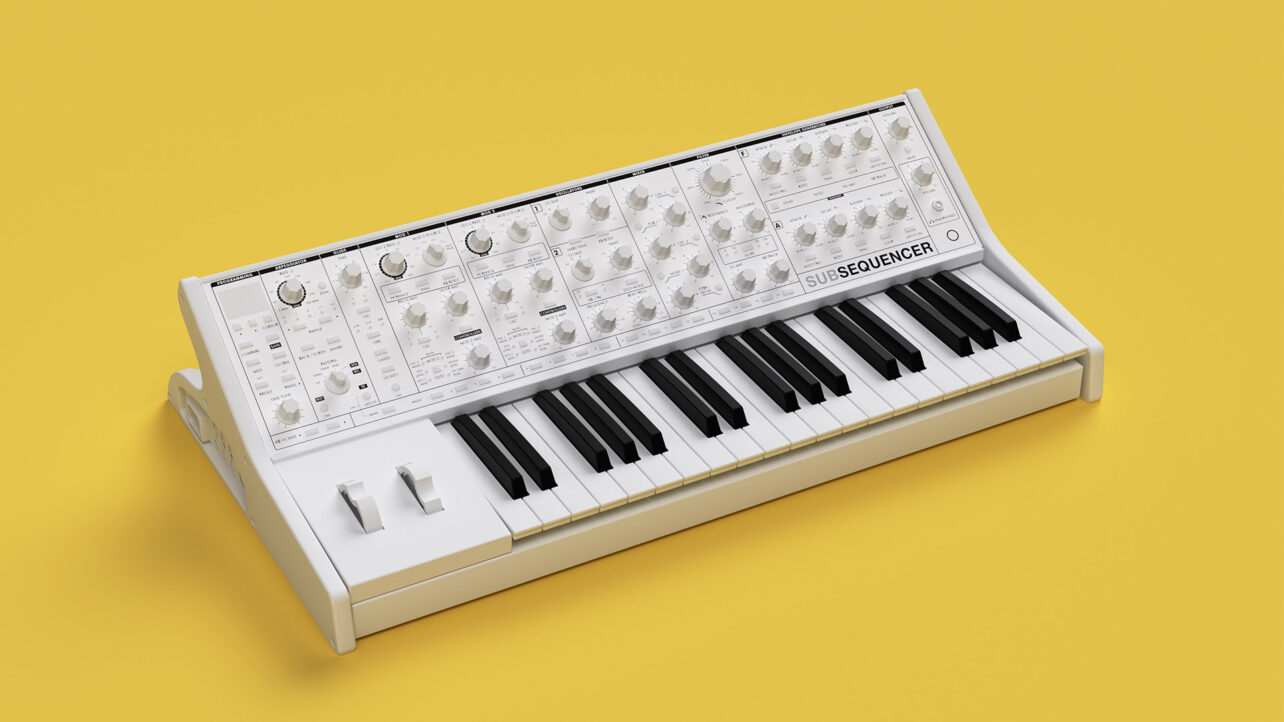The synthesizer. An electronic instrument that has made a huge footprint in music production history and is known for its substantial contribution to sound design. When composing my space music, I was always drawn to synth sounds as I felt they best represented the essence of outer space. Little did I know that the synthesizer was invented during a time when interest in space was at its peak. The race to the moon and the desire for more information about the universe coincided with the historical invention of the synthesizer. So, let’s explore the history of the synthesizer and the influence this instrument has on the genre of space music.
Emergence of Synthesizers
Synthesizers are instruments that paved the way for music technology and contributed greatly to the evolution of music production. Formed in the mid-20th century, the synthesizer was birthed around the same time as the Space Age—the era of the historical space race as well as the initial launch of the first-ever satellite, Sputnik. This period saw many cultural developments, including public interest in outer space.
The premise of synthesizers is that they are instruments that use electronics to generate audio signals. These audio signals could generate different soundwaves, such as sine, sawtooth, and triangle, each with unique characteristics, and could be further manipulated and shaped through filters, envelopes, and modulations.
The earliest foundations of synthesizers can be found in the Theremin, invented by Lev Sergeyevich Terman (later known as Leon Theremin) in 1928. This unique instrument uses two antennas that act as position sensors, allowing the player to use their hands to control the pitch and amplitude of the instrument. The result is a haunting and intimidating tone used in a fair few movie soundtracks, including Bernard Hermann’s The Day The Earth Stood Still, to the infamous Loki series, composed by Natalie Holt.
The First Synthesizers
One of the early pioneers of the synthesizer was the RCA Mark II, developed by Harry Olsen and Herbert Belar in 1951. The RCA Mark II was a revelation to composers during this time as it included a sequencer that used an automated system in comparison to the manual operation of a theremin. While the synthesizer itself took up a lot of space and steered far from being portable, the RCA Mark II provided more oscillators as well as artistic freedom in rhythm and tempo, a win-win for composers.
Another revolutionary synthesizer is the Moog Modular Synthesizer. Developed by Robert Moog and first sold in 1964, it gained critical acclaim for its impressive features, including its control voltage oscillators (VCO), modulation, filters, and envelopes. Then we saw the development of the Minimoog, a solution for those who desired a portable and home-studio-friendly synthesizer. It combined the large-format modular system into a much more accessible system. The Minimoog became a tool for delving into soundworlds that pushed the boundaries of its time. Notable artists, including Kraftwerk, Gary Numen as well as Bob Marley employed the Minimoog in their works.
Modular synthesizers are still popular today, with Moog being one of the frontrunners in the market. Furthermore, synthesizer accessibility became paramount as they became available in software editions on DAWs. Hardware synthesizers do cost more, but many proclaimed DAWs like Ableton include a variety of synthesizers that can be used to create any sound you desire.
Sonic Exploration through Synthesizers
So why are synthesizers closely linked to the sound of space? As the new age of space came to fruition, during the pinnacle of early synthesizer developments, this idea of a new sound through electrical signals was a revelation akin to the cultural development of space exploration.

Space music, at heart, is a genre that evokes emotion, a space to reflect, and a chance to practice deep listening, the act of awareness of the sounds around us rather than listening passively. Space ambient music, in particular, has the potential to take us into a trance state to emulate the feeling of floating or gliding. It’s also a genre that opens a world of experimentation with sound design, something that synthesizers are perfect for. Being able to carve sounds through the use of technology can further open our minds and imaginations to the topic of space.
Synthesizers became an influential instrument and popularized such genres, including space ambient, space disco, soundscape, new-age, and electronic music. The sonic exploration through synthesizers was an exciting discovery and challenged the means of musical composition and imagination.
Take a listen to the video below for this example of space ambiance. It uses the Moog Subharmonicon, a semi-modular polyrhythmic analog synthesizer—a fantastic instrument for creating space ambient music! Combining this with some reverb and delay is the secret to creating space music. Just listening to it for a few minutes can transport you to other realms, and it’s super relaxing!
Musical Features of Synthesizers
So, let’s talk about musical features. Synthesizers and space music go hand in hand through a wide range of techniques. Arpeggiated chords were a stand-out element in space music, providing rhythmic movement as well as a solid foundation of harmony.
On the other hand, synthesizers make compelling pad textures for a much more peaceful listening experience, emulating the tranquillity and beauty of outer space. Space also holds mystery, as well as fear, that synthesizers can generate such tones that are far more gritty and harsh, a texture and timbre that compliments the likes of space horror.
Audio effects such as reverb and delay enhance the sounds of synthesizers, giving them a sense of space and presence throughout the entirety of the track. Other tools, such as granulators, can create particle-like sounds from a synth patch, which makes for complex and experimental textures.
To bulk up the sound further, saturation or distortion are great effects to apply to synths to expose the harmonics further. Using these effects with automation, which allows you to adjust parameters over time, can create captivating soundscapes while keeping within the vicinity of the space realms.
Early Space Music Composers
Looking back on some of the early composers of space-themed music, it’s interesting to note the experimental nature of these tracks. Some of which are haunting, something along the lines of alien contact. Some composers leaned into the repetitive nature of ostinatos, a technique that uses a repeated pattern, most likely an arpeggio, which eventually cemented their styles and place within the space music genre.
Edward M. Zajda, Magnificent Desolation from Independent Electronic Music Composer (1969).
The birth of the synthesizer brought a lot of imagination and experimentation to music composition. Edward M. Zadja’s Independent Electronic Music Composers is a concoction of unique and random synth noises. His track Magnificent Desolation was inspired by the moon landing in 1969 and employs samples of the radio transmission from the lunar mission along with some laser-like and humming synth sounds.
Tangerine Dream, Phaedra (1974)
Tangerine Dream is a prolific German electronic music group that has been in the industry since the 1970s. They became a pivotal group in the development of kosmiche music (“Cosmic Music”), which heavily included the sounds of synthesizers.
Their 1974 album Phaedra had a considerable impact on the electronic music industry as well as on the group as a whole due to its innovative use of synthesizer sequencers. This inevitably established their sound of pulsing arpeggiated sequences, a considerable feature of space music, alongside haunting drones and rapid high-pitched sequences that scatter across the texture. Tangerine Dream used a Moog synthesizer for this album as a means of experimentation, only to result in their most influential album and begin their rise to fame.
Vangelis, The Music of Cosmos (1980) and Blade Runner (1982)
Vangelis is a Greek composer and producer of electronic music. Best known for his work on Blade Runner, Vangelis was no stranger to the addictive nature of the synthesizer. Vangelis composed the soundtrack for the TV series Cosmos, which took its audiences on a virtual journey through space, exploring planets and asteroids, and the journey of the Voyager exploring interstellar space. The soundtrack employs a combination of synth textures as well as acoustic instrumentation, such as an orchestra.
His work on Blade Runner was highly regarded, and a lot came down to the iconic sound of the theme played on a Yamaha CS-80. Its rich timbre is a perfect medium for motifs and melodies to pierce through the pad textures beneath. Around 1:15, we hear the first instance of the synthesizer, which eventually blossoms. The synth has a special type of sound that has a subtle attack time, allowing it to swell, but also a little harshness to the soundwave, setting it apart from the rest of the instrumentation.
Evolution of Space Music
Since the early days of modular and the experimentation of electronic synthesizer music, today’s music still largely uses synthesizers. Sequencers that can generate repetitive melodies are still a tool that many electronic producers employ. However, they have now been bolstered with many more modulation options.
With the enhancements behind music production and the many audio effects that can be applied to synthesizers, the sound of space can be freely explored with endless possibilities. Some wavetable synthesizers allow you to add your samples to the synth, which can apply different texture types to the overall sound.
Furthermore, the wonders of LFO (Low-Frequency Oscillation) have greatly expanded over the years, with the ability to assign to pretty much any parameter, from ADSR and filters to internal effects such as reverb, delay, distortion, and gain. Software synths such as Vital offer spectral oscillator warping, where you can customize waveform harmonics, resulting in unique shapes and timbres.
Because there’s far more scope to modulate, sound design for synth space music is far more extensive. Many hardware producers like to use guitar pedals with synthesizers to create otherworldly sounds and self-generating material through the use of sequencers and other MIDI effects. With the improved accessibility of synthesizers, this means anyone can make space music. Vital is completely free. So long as you have a compatible DAW, you’re already there with being able to create space music. This wasn’t the case fifty-odd years ago!
To Conclude…
Since the birth of synthesizers, they were already destined to be associated with space. The crucial development of the space race became a catalyst for synthesizers to take the reigns in music production. With innovative systems and the ability to create various sounds from pulsating sequences and enthralling drones, they can create the sensation of adventure, weightlessness, and mystery, feelings that are greatly associated with the vast universe.
Are you in search of synth-infused sci-fi music for your project? Look no further! Our royalty-free album, Planetary Scores, is just what you need. With 15 tracks tailored for the no-budget filmmaker, this album features a blend of synth-driven sci-fi and electronic ambient sounds. Priced at just £38.99, it’s an affordable choice for quality music. Purchase it here.
And you can preview our tracks here.

